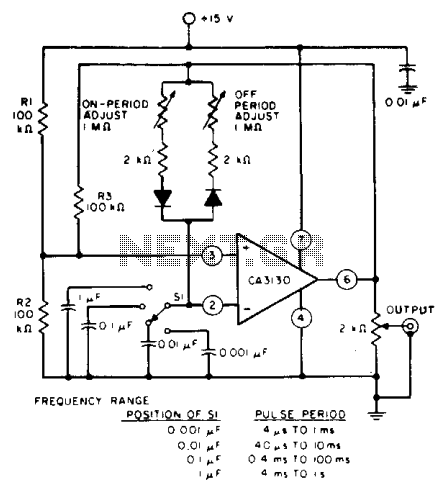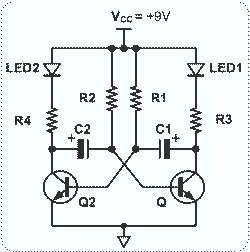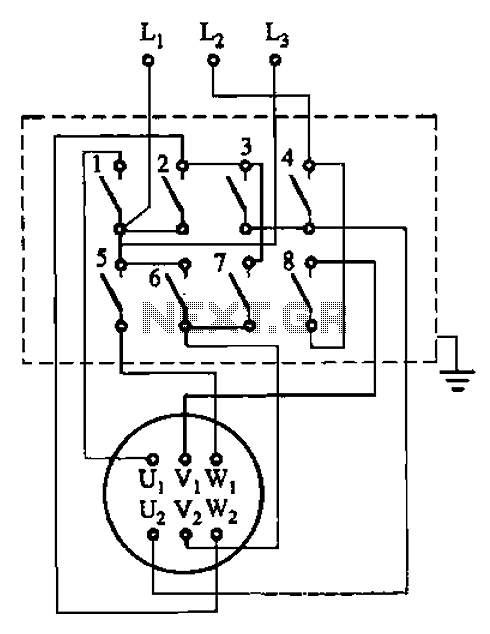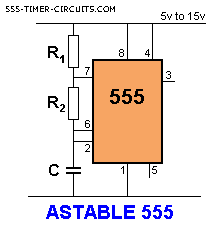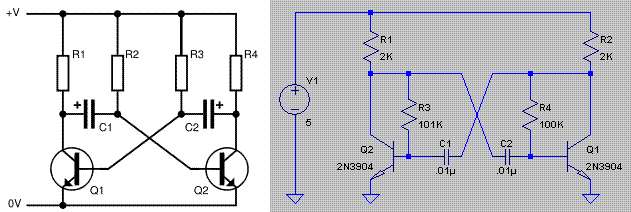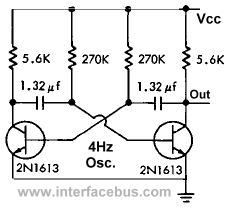
Starting Network for Astable Multivibrator
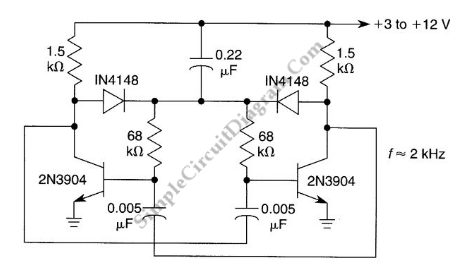
An astable multivibrator is a flip-flop that produces two unstable states (high and low), functioning as an oscillator.
An astable multivibrator is a fundamental electronic circuit that continuously switches between its two states without requiring any external triggering signals. This circuit is widely used in various applications, including clock generation, signal modulation, and timing applications.
The basic configuration of an astable multivibrator typically involves two resistors and a capacitor connected to a bistable multivibrator, often utilizing operational amplifiers or transistors. The resistors control the charge and discharge time of the capacitor, which in turn dictates the frequency of oscillation.
When the circuit is powered, the capacitor begins to charge through one resistor until it reaches a certain threshold voltage, at which point the output state changes from low to high. The capacitor then discharges through the second resistor, causing the output to switch back from high to low. This cycle continues indefinitely, resulting in a square wave output.
The frequency of oscillation can be calculated using the formula:
\[ f = \frac{1.44}{(R1 + 2R2) \cdot C} \]
where \( R1 \) and \( R2 \) are the resistances in ohms, and \( C \) is the capacitance in farads. The duty cycle, which determines the proportion of time the output is high versus low, can also be adjusted by varying the resistor values.
Astable multivibrators are commonly implemented in digital circuits for applications such as LED flashers, tone generators, and pulse width modulation (PWM) signals. Understanding the design and behavior of this circuit is essential for engineers working with timing and waveform generation in electronics.A flip-flop that generates two unstable states (high-low) is called astable multivibrator, a fancy name for you to say it`s an oscillator. The very basic of.. 🔗 External reference
An astable multivibrator is a fundamental electronic circuit that continuously switches between its two states without requiring any external triggering signals. This circuit is widely used in various applications, including clock generation, signal modulation, and timing applications.
The basic configuration of an astable multivibrator typically involves two resistors and a capacitor connected to a bistable multivibrator, often utilizing operational amplifiers or transistors. The resistors control the charge and discharge time of the capacitor, which in turn dictates the frequency of oscillation.
When the circuit is powered, the capacitor begins to charge through one resistor until it reaches a certain threshold voltage, at which point the output state changes from low to high. The capacitor then discharges through the second resistor, causing the output to switch back from high to low. This cycle continues indefinitely, resulting in a square wave output.
The frequency of oscillation can be calculated using the formula:
\[ f = \frac{1.44}{(R1 + 2R2) \cdot C} \]
where \( R1 \) and \( R2 \) are the resistances in ohms, and \( C \) is the capacitance in farads. The duty cycle, which determines the proportion of time the output is high versus low, can also be adjusted by varying the resistor values.
Astable multivibrators are commonly implemented in digital circuits for applications such as LED flashers, tone generators, and pulse width modulation (PWM) signals. Understanding the design and behavior of this circuit is essential for engineers working with timing and waveform generation in electronics.A flip-flop that generates two unstable states (high-low) is called astable multivibrator, a fancy name for you to say it`s an oscillator. The very basic of.. 🔗 External reference
